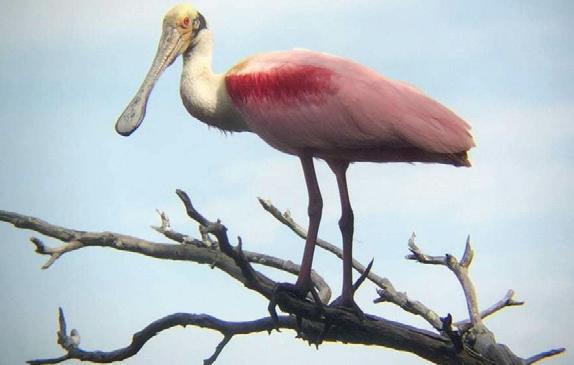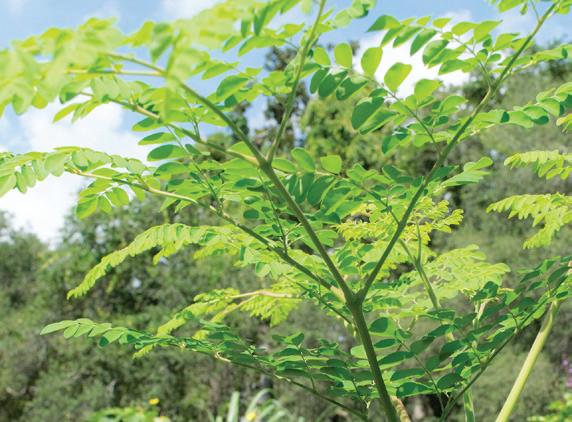
4 minute read
News from The Lodge on LSSI
Here’s some news from one of our favorite places on the Georgia Coast, The Lodge on Little St. Simons Island. Maybe we’ll see you there soon!
Article and Photos by Staff of The Lodge on Little St. Simons Island
Advertisement
Summer brings us close to some of the most charismatic species on Little St. Simons Island. From spoonbills to spot-tails, beach walks to baby turtles, sunrises to sunsets, our days have been saturated with all things wild and beautiful. And in drawing us in by appealing to our senses, these experiences open the door for learning and inspiring conservation.
Continued investigations of lemon shark nursery habitat brought back friends and researchers to conduct field work, presenting guests with a one-of-a-kind, outdoor classroom to learn more about shark behavior and their role in marine ecosystems. Events like Shark Days also give young, aspiring biologists and naturalists the invaluable perspective of seeing the work they envision first hand.
Lower water levels in some of the naturally occurring wetlands due to a dry first half of summer exposed acres of new mudflats, and several early shorebirds migrants have been spotted taking advantage of that foraging habitat. Pectoral and solitary sandpipers have been seen recently at Goose Pond. With consistently high numbers of shorebirds and wading birds, gators wallowing in the shallower waters, and sunsets like this, Goose Pond has been a favorite stop on many of our excursions.
The Lodge on LSSI is pleased to introduce a 4-day kayaking adventure, exploring the beautiful low country around the Altamaha Delta and Little St. Simons Island! We invite you to join us on the Captain Gabby for two nights followed by two nights on Little St. Simons Island for a unique experience of this wild coastal area with naturalist guided paddling adventures every day, gear and meals included. Visit our website or call to learn more and book your spot for the Low Country Paddling Expedition.
This page, top to bottom:
A Roseate spoonbill (Platalea ajaja) perched on a branch.

Naturalist Nate Ramey releases a tagged lemon shark (Negaprion brevirostris).

A multi-day paddling adventure is being offered this fall.
Opposite page, top to bottom, left to right: five distinct colonies nesting on our beaches this year, and we confirmed at least a half-dozen fledged young.
A nesting sea turtle on the LSSI beach.
Newly-hatched Least Tern chicks are well-camouflaged on sandy substrates where adults nest and raise their young. Map showing Quash's House on LSSI.
A Moringa plant with woody stalk and edible leaves.
Little St. Simons Island has had a record-breaking sea turtle nesting season with 237 loggerhead sea turtle nests documented, exceeding our previous record set in 2016 by 14 nests. Members of the naturalist team created multiple guest programs each week that are focused on nest excavations. Island guests had opportunities to help count hatched eggs and record important data that will go to the GADNR. And in some cases, guests have had the opportunity to witness sea turtle hatchlings that had not quite made it out of their nest and to the ocean. The live hatchlings provided a memorable experience for all who are lucky enough to encounter them.

Our seasonal and year-round staff worked together to monitor nesting shorebirds and seabirds this year. With nesting at an end, we see our beach-nesting birds flocking and entering nonbreeding/ wintering behavior patterns.
We monitored 15 nesting pairs of American Oystercatchers on our seven miles of beach this spring and summer. We noted the return of many familiar leg-banded adult oystercatchers including Red 6K, who fledged a chick on the south main beach of LSSI. This bird has nested on LSSI since 2011 and successfully fledged a chick last year as well.
We documented 50 pairs of Wilson’s Plovers nesting on our beaches in 2019. We performed nest checks and used game cameras at a subset of Wilson’s Plover nests to understand their success rate. One of our nest site cameras captured some exciting photos of a leg-banded parent incubating a nest and hatching chicks! This Wilson’s Plover daddy hatched and was banded on Little St. Simons Island in June 2015. Since then, we’ve seen him each summer on the island. His 2019 nest was just 1.14 miles away from where he hatched!

Least Terns nest in groups on open ground. We documented
Little St. Simons Island staff recently undertook efforts to carefully protect the only physical remains from the antebellum period found on the island today. Part of a brick chimney and tabby foundation are all that is left of Quash’s House, the dwelling of an enslaved boatman on the northwestern corner of the island. Though we do not have much information on Quash, he was probably stationed at the island to tend the numerous varieties of livestock kept here for the Butler plantations. The ruins of Quash’s House provide an important opportunity and platform for LSSI staff to begin to interpret the story and plight of enslaved African Americans on Georgia’s coast.
An interesting plant is doing well in our garden this season. In the new, vine-covered gathering space, one can’t miss the looming 10-foot tree. It’s Moringa. Sound familiar? It’s possible you’ve seen it in capsule or powder form in health foods or nutrition stores. Moringa contains high levels of vitamins, minerals, and antioxidants, and it can be used in a variety of ways. One can cook with it as a leafy green, use it in salad mixes, or as The Lodge has been doing lately, mix it in with something like couscous. It has very little flavor, so it’s not likely to alter the taste of any dish. Moringa, native to northern India, grows well in poor soil, grows fast, and when cut back will easily form new shoots. Staff horticulturalist Séamus says in his native South Africa, Moringa is used in development projects because of its prolific tendencies, which not only provide quick vegetation and human nutrition but also firewood and animal fodder.










